Greenland’s Ilulissat Icefjord
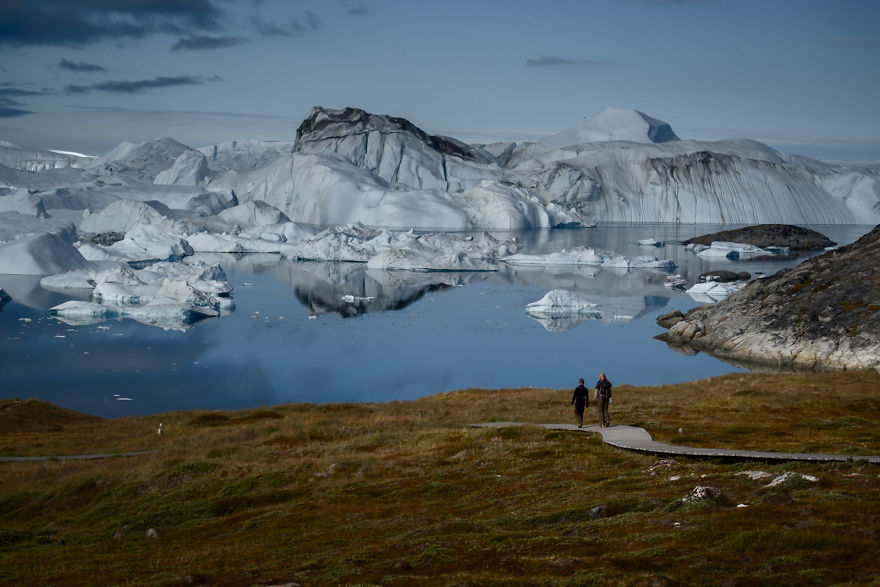
Located on the west coast of Greenland, 250 km north of the Arctic Circle, it is a tidal fjord covered with floating brash and massive ice
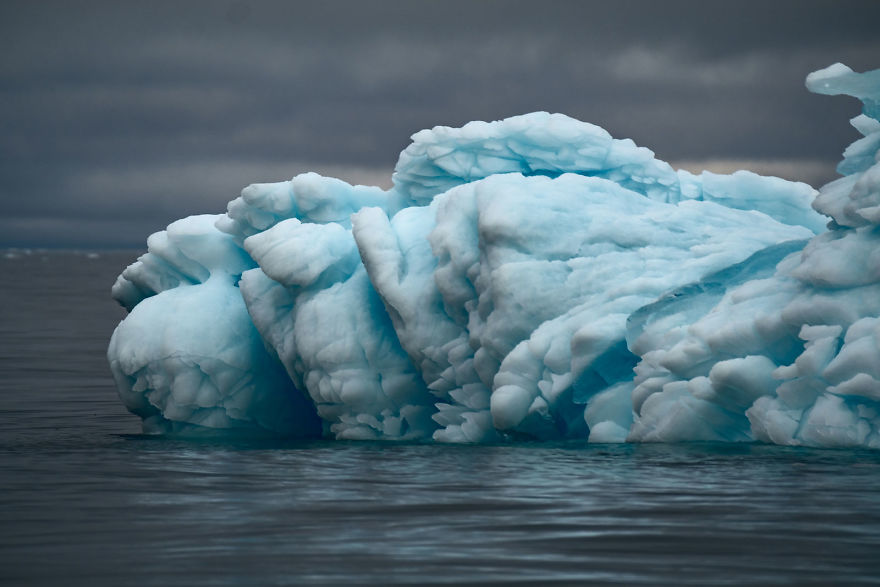
Sermeq Kujalleq is also one of the fastest moving (40 m per day) and most active glaciers in the world
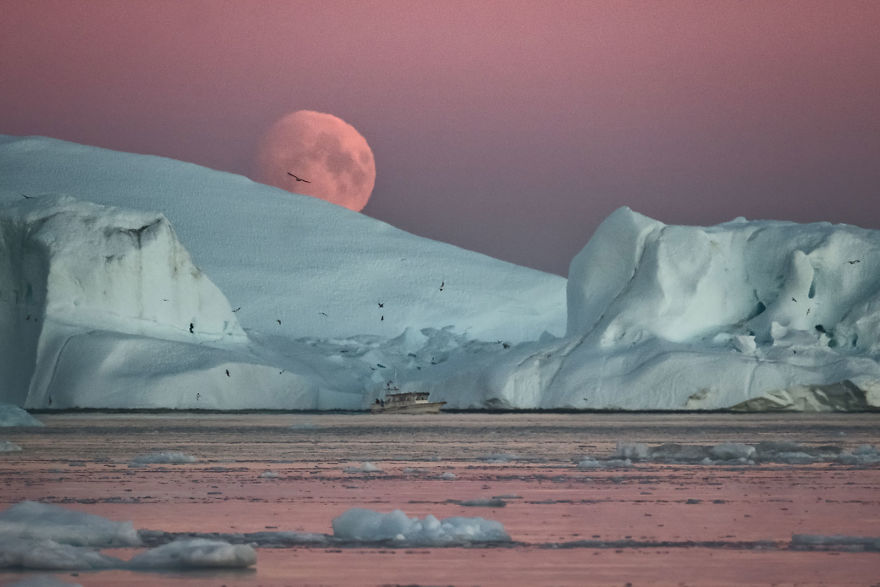
Icebergs breaking from the glacier are often so large – up to a kilometer (3,300 ft) in height – that they are too tall to float down the fjord and lie stuck on the bottom of its shallower areas
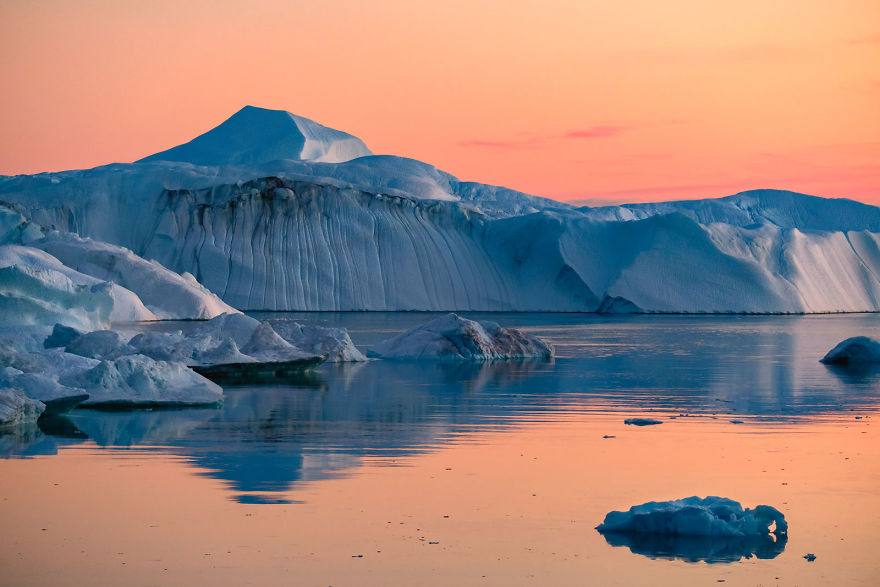
Sometimes they lie there for years, until they are broken up by the force of the glacier and icebergs further up the fjord.
Surreal colours of Midnight Sun in Ilulissat Icefjord

On breaking up the icebergs emerge into the open sea and initially travel north with ocean currents before turning south and running into the Atlantic Ocean.
Larger icebergs typically do not melt until they reach 40-45 degrees north – further south than the United Kingdom and level with New York City
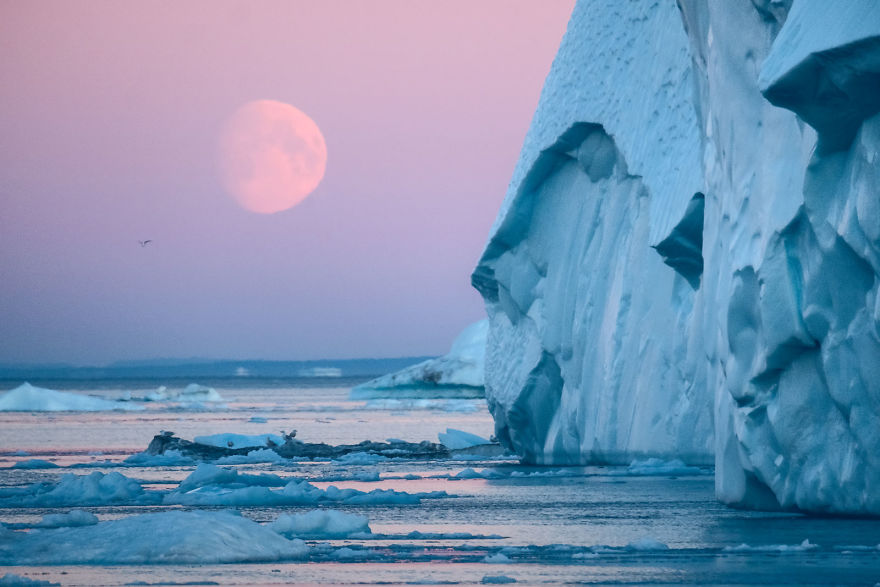
The Icefjord at around 1am in summertime
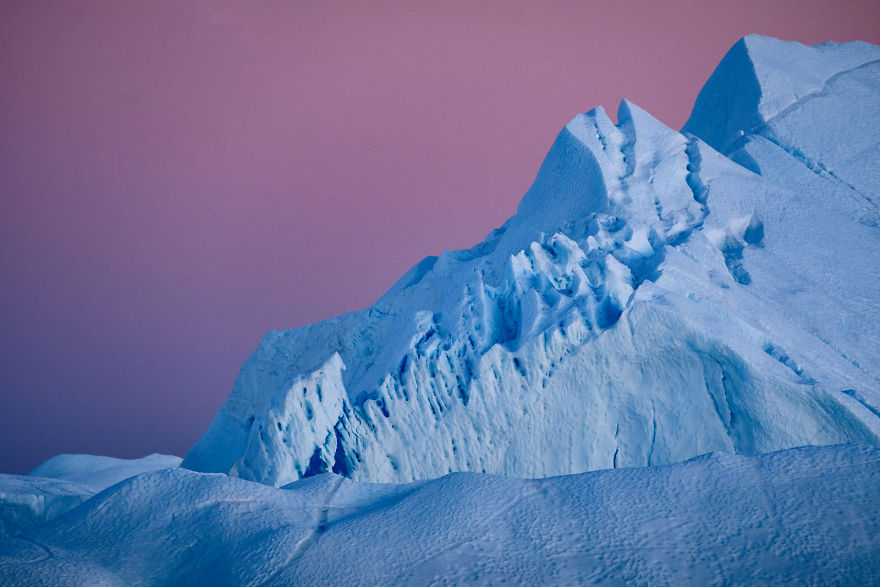
Whales are often seen feeding in the area
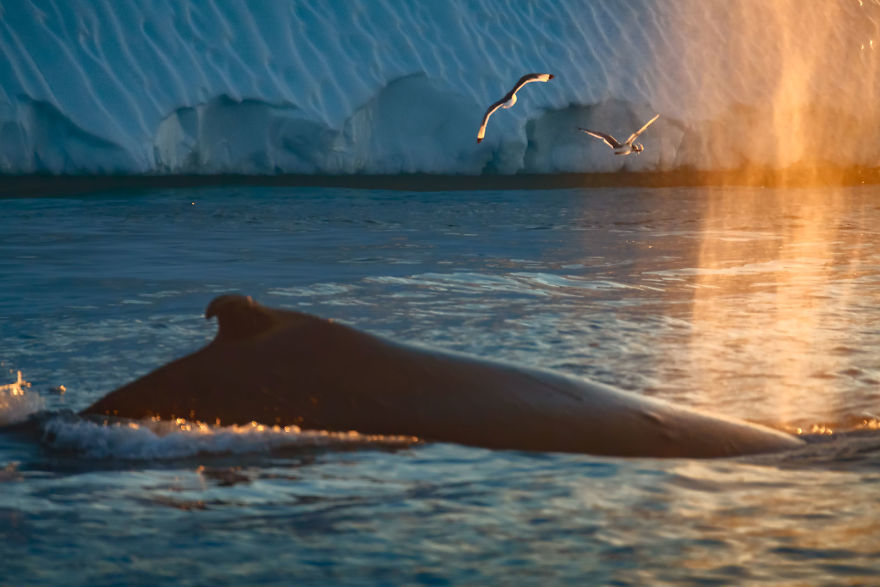
Moon rising over “parked” icebergs
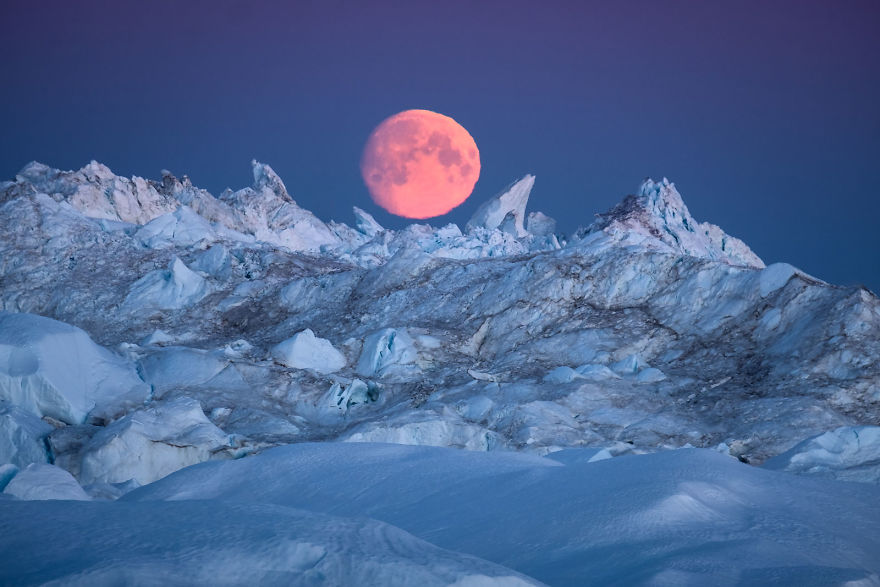
Sermeq Kujalleq is a very productive glacier
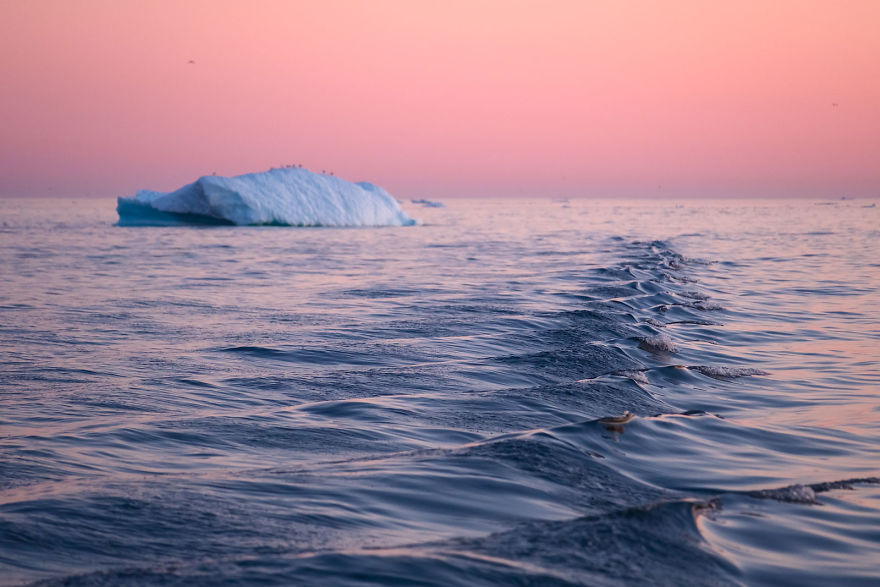
It annually calves over 35 km3 of ice, i.e. 10% of the production of all Greenland calf ice and more than any other glacier outside Antarctica.
Ilulissat Icefjord is a UNESCO World Heritage Site
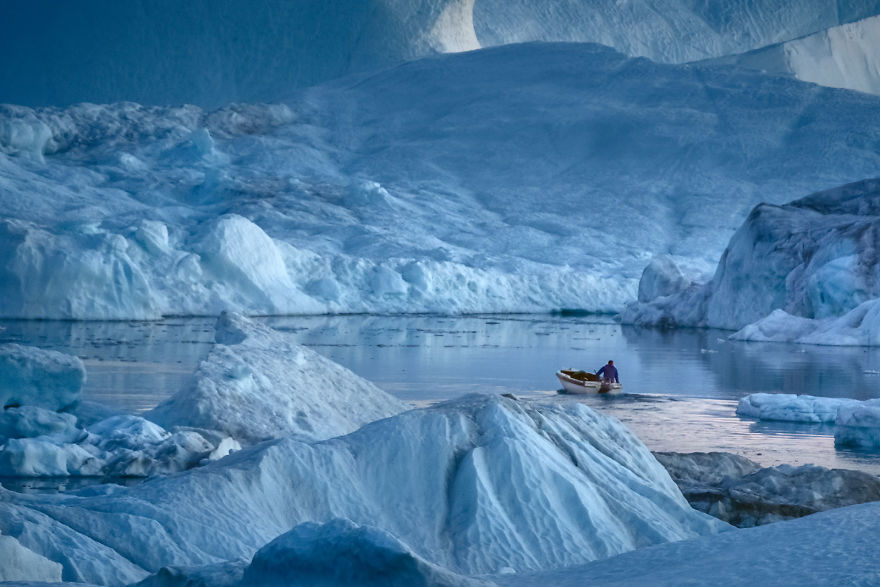
The combination of a huge ice-sheet and the dramatic sounds of a fast-moving glacial ice-stream calving into a fjord full of icebergs make for a dramatic and awe-inspiring natural phenomenon.
Credits: Instagram
 Barnorama All Fun In The Barn
Barnorama All Fun In The Barn